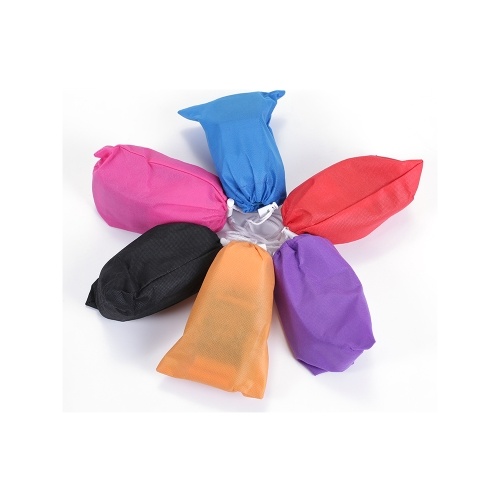Gratis
Apoyo

Languages: Chinese - Mandarin & Cantonese, Dutch, English, French, German, Greek, Indonesian, Italian, Japanese, Korean, Portuguese, Spanish, Swedish, Thai, Russian Advisories: Clients travelling at the 6:15am departure will be served a breakfast meal A prime time supplement is in effect on this tour for departures between 9:00am-11:30am Cameras and personal items are NOT permitted on the Skywalk. Free lockers are available to store personal items The hike to the boat requires some physical effort and is not recommended for persons with moderate to extreme physical limitations Flight Duration: Approximately 70 minutes Time spent in Canyon: Approximately 4 hours Hotel Pick-Up: Passengers are picked up from most major Las Vegas hotels. Check-In: Upon arrival, check-in at our private air tour terminal. Flight: Approximately 35 minutes to Grand Canyon West. Landing: Helicopter ride to canyon's bottom. Boat Cruise: Pontoon boat cruise upriver into the Canyon. Approximately 15-20 minutes. Helicopter Return: Ascend 4,000 feet back to the canyons rim. Eagle Point and Guano Point: Venture out on the Skywalk Bridge at Eagle Point. When you're done exploring, transfer to Guano Point for more picture taking. A meal voucher is provided and can be used at one of the points. Return Flight to Hotel Drop-off: An approximate 35 minute flight back to the terminal. Once you are back you will be loaded onto a motor coach and taken back to your hotel.
Menú de 2 Platos en la Torre Eiffel (Entrante + Plato Principal o Plato Principal + Postre)*
Entrante a escoger:
Sopa cremosa de castañas con setas y bindenfleisch
Ensalada de escarola y salmón ahumado con huevo pasado por agua, crema de puerro y aderezo de vino
Paté de pato en crôute con ensalada de repollo, manzana y tomillo
**
Plato Principal a escoger:
Macarrones curvos, pato confitado cocinado a las hierbas y salsa persillade
Filete de trucha a la plancha, lentejas verdes guisadas con Brie y vegetales, cilantro y soja ahumada
Pechuga de pollo asado, puré de patatas con hierbas y salsa cremosa de Madeira
**
Queso o postre a escoger:
Queso comté (sin pasteurizar) con ensalada de milamores
"Fromage Blanc" de granja servido con castañas y clementinas
Crema de frutos de la pasión con mermelada de mango
Mouse de chocolate Guanaja con praliné
Crema de merengue y limón con cobertura crujiente
Macedonia de frutas de temporada
**
Bebidas:
1 copa de vino o cerveza o refresco
Café
Menú Infantil (menos de 12 años)*
Velouté de lentejas verdes Le Puy, Ravioles de Royans y ricotta con aceite de trufa
**
Pasta servida con salsa de tomate, mantequilla o crema de parmesano
**
Mouse de chocolate Guanaja con crujiente de Praliné
**
Refresco
*Ejemplo de menú, sujeto a modificaciones
Incluye:
Ruta con crucero por el río Sena
Entradas para la primera planta de la Torre Eiffel
Almuerzo en el restaurante “58 Tour Eiffel” (2 platos + bebida), ubicado en el 1r piso de la Tour Eiffel
Visita guiada al Museo del Louvre y la Catedral de Notre Dame
Entrada (sin hacer cola) al museo de Louvre
Idiomas:
Español: Jueves a las 09:30 h / Lunes, miércoles, jueves, viernes y sábados a las 10:30 h
Inglés: Lunes, miércoles, jueves, viernes, sábados y domingos a las 09:30 h / Lunes, miércoles, jueves, viernes, sábados y domingos a las 10:30 h
Chino: Jueves a las 09:30 h
iFLY welcome flyers from 3 to 103. If you have reasonable health and fitness you can fly. But do check the criteria below before you purchase tickets. There are a few exceptions: Flyers must be over 3 years of age. Participants must weigh less than 300 pounds. Participants who weigh between 260 and 300 pounds must bring this to the attention of an iFLY representative as additional restrictions and instructor scheduling limitations may apply. Women who are pregnant should not fly. Folks with recent back, neck and heart problems should check with a doctor before flying. iFLY recommends people with prior shoulder dislocations DO NOT FLY! Click below for a complete list of restrictions: https://www.iflyworld.com/flight-restrictions-and-requirements/
There is a free bar on this trip for throughout the cruise. Drinks include lager, sangria, cava and soft drinks, so no need to be thirsty! The friendly crew will look after you on this 5 hour Catamaran cruise and you can just sit back and relax and take in the beautiful coastal views. All ages catered for.
Eine Tour, die Sie auf den Spuren Mozarts durch das malerische Voralpenland nach Salzburg, durch das Salzkammergut an den Wolfgangsee und zum Mondsee führt. Nach einer Fahrt durch das Voralpenland und vorbei am Chiemsee erreichen wir die Salzburg. Zur Erkundung der Geburtsstadt von Wolfgang Amadeus Mozart (* 1756) und seinem historischen Stadtkern, der zum UNESCO Weltkulturerbe zählt, haben Sie 2,5 Stunden. Nächstes Ziel ist dann der Wolfgangsee. Wer möchte kann hier ein Boot nach St. Wolfgang nehmen und für einen Moment in die berühmten Filmkulisse („Weißes Rössel“) schlüpfen. Zudem bietet sich ein Besuch der Wallfahrtskirche an. Auf der Rückfahrt erwartet Sie eine weitere Filmkulisse: der Mondsee der „Trapp-Familie“. Highlights: Salzburg Mozart, Weißes Rössl und Salzkammergut Wolfgangsee Dauer: 11 Stunden Reisepass oder Personalausweis bzw. Visum für Österreich erforderlich! Eintritte sind nicht im Ticketpreis enthalten. Nebenkosten: Schiff € 13,- (nur im Sommer)
What time is best to visit? It's a question we're often asked, and the truth is that there is no best time to visit the Sydney Tower Eye. Whether it's bright sunshine, overcast, windy, night or even foggy, there's always something to see. Sunset is our busiest time of day, so if you want to catch an amazing sunet, be sure to arrive at least 45 minutes before sunset.
